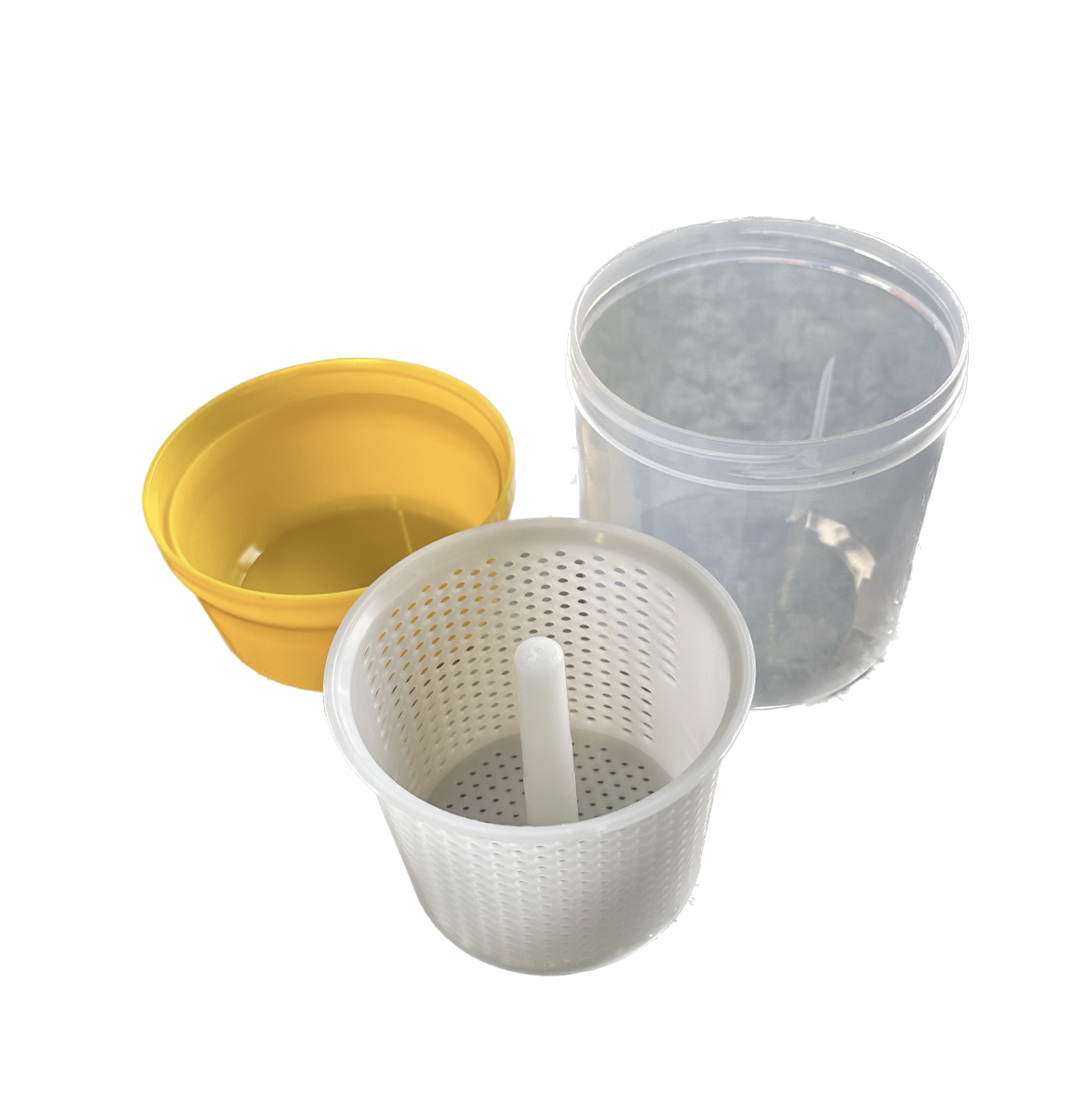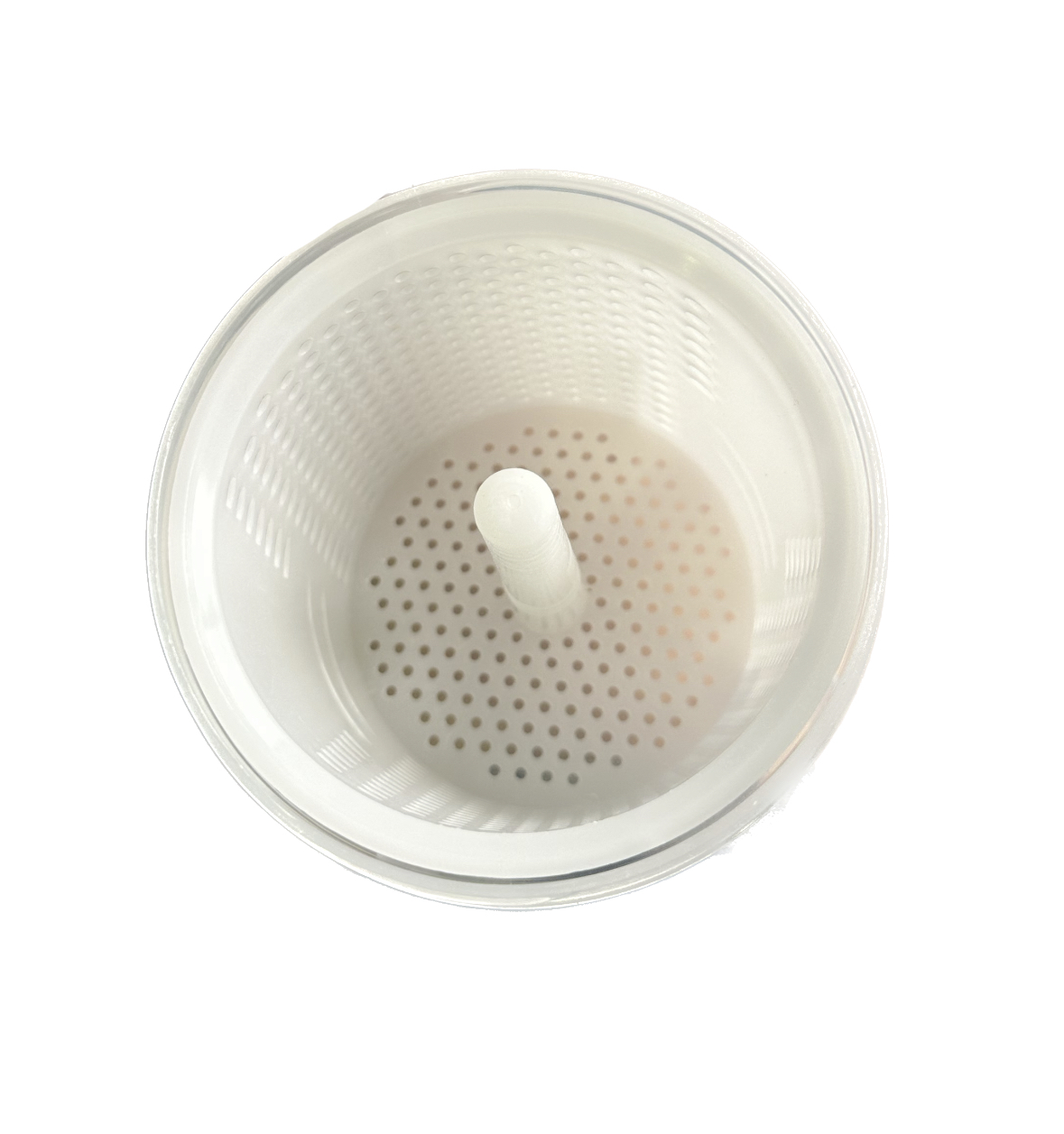



The QLD Department of Agriculture and Fisheries are asking Queensland beekeepers to test their hives for Varroa Mite.
Report your tests to Bee 123 online form even if they come up with no Varroa Mite.
If you find any trace of Varroa Mite in your hives please report immediately to either:
In stock
Think your hive has signs of varroa mite?
A Varroa Mite Check Kit uses alcohol and bees to test if there is an infestation of varroa mite in a hive. It also lets you know how severe the infestation is by doing a count.
What are Varroa Mite?
Varroa destructor or, the Varroa mite is an external parasitic mite that attacks and feeds on honey bees. They are most devastating pests in the beekeeping industry around the world. It is important to understand how to identify them and how to act if there is an infestation present.
We currently only have Varroa Mite present in NSW ONLY. But this may change over time.
What effect does Varroa Mite have on the Honey Bees?
Individual bees infested with Varroa during their development usually survive to emergence but may show signs of physical or physiological damage as adults.
Some brood infested by Varroa may die, usually at the pupal stage of development and remain in the cell until removed by adult bees.
Varroa mites feeding and reproducing on developing larvae and pupae (worker and drone brood), has a major effect on individual honey bees, as they are affecting the most sensitive life stages of the honey bee.
Worker bees which were parasitised during their development begin their foraging life stage earlier, but also have a significantly reduced lifespan.
Infected worker bees and drones also display a decreased capability of non-associated learning, prolonged absences from the colony and lower rate of return to the colony, which may be due to a reduced ability to navigate.
A significant impact of adult Varroa mites feeding on developing brood, as well as adult honey bees is through the transmission of viruses. Varroa mites feed on the honey bee’s haemolymph (Blood) during brood development, as well as on adult bees.
This results in Varroa mites acting as an effective vector for numerous viruses.
This can cause common symptoms in the honey bee population, such as deformed and shrivelled wings, legs or abdomens, as well as symptoms specific to these other pests.
Together these effects mean that honey bee viruses and other pests become more damaging when Varroa is present in a colony.
You will require the following to complete a varroa check test:
– Rubbing ALcohol, or Methylated Spirits
– Gloves and Suit (recommended)
– Varroa Check Kit
1. Collect the bees:
Pour enough liquid (alcohol) in the bottom of the bowl to cover the bottom of the white basket.
Choose a frame of capped brood.
If the queen is present on this frame, isolate her and protect her. DO NOT put her into the white basket.
Take the whte basket out of the bowl and use this to collect your sample of bees.
Collect a sample of bees and place it inside the basket.
(Recommended sampling: 200-300 bees. 300:Top level indicated on basket. 200:Bottom level indicated on basket.)
Place basket into bowl with alcohol in it and place the lid on.
Shake bees into the alcohol so they are immersed in it. This helps prevent them trying to escape.
2. Varroa Seperation
Gently shake the varroa check up and down for up to 4 minutes (recommended by the NSW DPI)
You can shake vertically, side to side or rotate it to eptimize seperation.
3. Counting
Count the Mites by looking through the transparent bowl or after removing the bees.
To calculate the percentage of infestation by doing the following:
Using 300 bees, divide number of observed mites by 3.
Using 200 Bees, divide number of observed mites by 2.